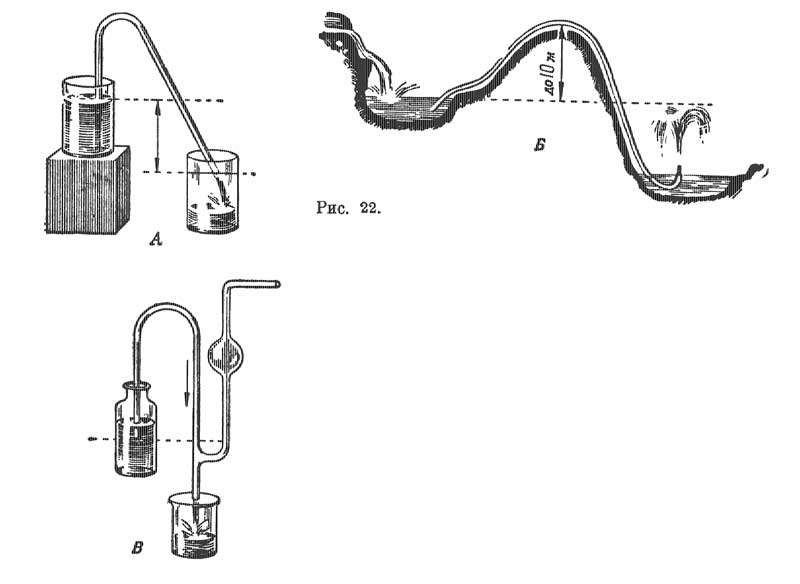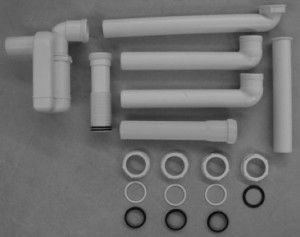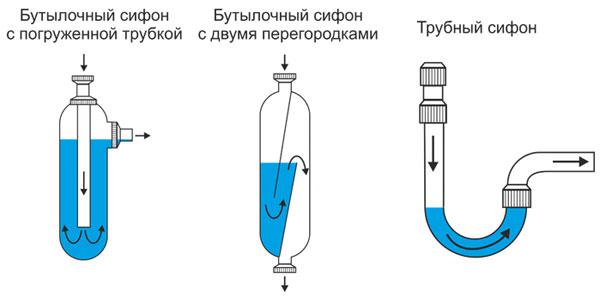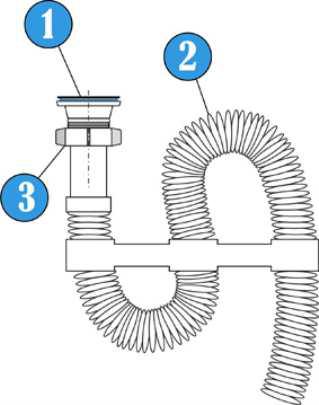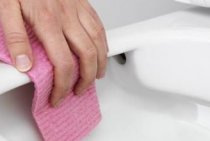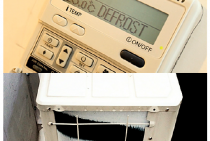Siphon
Filed under: Experiences , Crafts , Experiments | Tags: Experiments, Crafts, Siphon, experiment | October 11, 2012 | Svetlana
Those who are not familiar with the laws of physics will find it difficult to believe that water in a tube can overflow a hill without the help of a pump. This, however, is possible, but under two conditions: 1) the bucket for the drain must be lower than the vessel from which the water flows, and 2) the slide must not be higher than 10 meters. To understand the operation of such a device, consider a very simple apparatus called a siphon.
The short end of the bent tube is inserted into the vessel, from which water flows out, and the long end into an empty jar (Fig. 22, A). If you first draw water into the tube and lower its short end into the upper vessel with water, then it will be enough to open the lower hole in order for a continuous stream of water to flow.
Water will flow until the upper vessel is completely empty.
You can lower the end of an empty tube into the upper vessel, and then draw water into your mouth through the long end, after which the water will begin to pour out by itself.
How does a siphon work? Air presses on both ends of the tube with the same force, and the water in them would be in equilibrium if both holes were at the same level. But since one end of the siphon is lower than the other, the liquid column in it is heavier than in the short elbow. Therefore, water pours out of this longer end.
and atmospheric pressure forces water into the hole in the short end. Thus, water is continuously drawn into the short end, as it were. In fact, this pressure from outside air forces water into a short tube. It is very good to make an experiment with a siphon using a rubber tube. Then it can be observed that the lower the free end of the tube is lowered, the faster the water will pour out, and if the end of the tube is raised to the level of the shorter part of the siphon, the water will completely cease to be sewn in. If, however, this movable end is raised together with the second vessel above the surface of the liquid in the upper vessel, then all the water from the siphon will pour back into the upper vessel. On fig. 22, B shows how water can be drawn from the lake through the hill and out into the valley with a fountain.
When air is drawn out of the siphon by the mouth, liquid can enter the mouth, and since harmful liquids, such as acids, often overflow with a siphon, a very simple device was invented to protect oneself. Another tube was attached to the side of the long siphon tube so that it entered the siphon with its lower end. The upper end of this additional tube is bent, and, in addition, a small ball is made on it (Fig. 22, 5). Use this siphon like this. First, the long end of the siphon, that is, the outlet, is plugged, then the liquid is sucked into the side tube. The ball prevents the liquid from getting into the mouth, because, having reached the ball, the liquid rises very slowly, and its retraction can be stopped. Now you just have to open the bottom hole of the siphon, and the liquid will flow out of it.
B. Donat
"Physics in games"
Principle of operation
Over time, the designs of all plumbing fixtures change, the same applies to the siphon. However, no matter what design it acquires, the principle of operation of the siphon remains unchanged. The simplest scheme can be represented as follows:
- water enters the flask through the drain of the sink;
- passes through several nozzles;
- some water remains in the sump;
- the rest of the water enters the sewer, passing through the outlet pipe;
- water that has settled in the sump creates a blockage, as a result of which an unpleasant odor remains in the sewer.
Siphon disassembled
With the correct installation of the device, the principle of operation of the siphon is not violated.There is an exception in which the smell can spread throughout the room. Here we are talking about the long absence of the owners of the apartment, when the sinks and the bath are not used for a long time. In this case, the smell in the room may appear, but it can be easily eliminated by starting the water.
It is worth saying that this product consists of several elements, which are interconnected by cone-shaped sleeves-gaskets. It is these gaskets that play an important role in the safety and performance of the device.
It is very important that the sleeves have sufficient plasticity. Poor-quality gaskets can lead to a sudden breakdown of the device, resulting in the need to repair or replace the entire siphon
Consider the arrangement of siphons
Traditionally, a siphon consists of the following parts:
- frame;
- withdrawal;
- square;
- insulated socket;
- sewer pipe.
Siphon device for kitchen sink with overflow and additional outlets
As you can see in the photo, the bottle-type sump consists of seven main parts:
- Outlet, or drain hole of the sink;
- Overflow connected to a special hole located at the top of the sink;
- Branch designed for additional connection to the drain of a dishwasher or washing machine in the kitchen;
- Flask;
- Branch pipe to which the outlet is attached, connected to the sewer;
- Special gasket;
- Connecting elements: screws, nuts, collars.
The flask device works as follows: water from the sink enters the drain hole or outlet. Further, through the outlet, the water flows into the siphon flask, where it passes through the sump-pipe system, after which it finally enters the sewer through the outlet outlet.
The meaning of such a device is that the sump retains debris and food particles. In addition, with the correct installation of such a device, a so-called water seal is created in it, which does not allow sewer gases to enter the room.
Important! All sorts of gaseous sewer miasms are harmful not only with an unpleasant odor: they are poisonous substances that can cause serious harm to human health. Also, sewage is a carrier of infection, which should also be taken into account.
A siphon with an overflow for a kitchen sink is best suited, as it has several important features:
- Creates a reliable water seal that prevents the penetration of an unpleasant odor from the sewer into the kitchen;
- It is possible to connect a washing machine and dishwasher to the drainage system;
- The presence of an overflow insures you against overflowing the sink and flooding the neighbors;
The flask design implies the possibility of regular cleaning with your own hands without much effort.
It is also worth noting that bottle models have a rigid structure and require a strictly defined amount of space for installation under the kitchen sink or sink.
An overflow is a small hole in the top of the sink connected by a pipe to a siphon. The overflow is designed to drain water when filling the sink and prevent water from spilling onto the floor.
Corrugated siphon device
As can be seen in the diagram, the corrugated apparatus is much simpler than the flask one:
- Sink drain or outlet;
- Flexible corrugated pipe;
- Connecting elements and nuts.
Such models have one clear advantage: they are flexible and do not require a strictly fixed space under the sink. Most often, such devices are used in bathrooms.
Advice! You should not use a corrugated siphon in the kitchen: it is much more difficult to clean it, and garbage and food debris will accumulate in the folds of the corrugation after washing the dishes.
This type of outlet also creates a reliable water seal that does not allow fetid fumes from the sewer system to enter the living space.
Pipe siphon device
For bathtubs and shower stalls (trays), a so-called bathtub piping or pipe siphon is used. This miracle of technology is a curved pipe through which large debris and other unwanted objects cannot enter the sewer. In addition, the bend creates a water seal in the path of the spread of all kinds of sewer miasms.
The device is quite simple:
- Drainage hole of the bathroom or pallet;
- Pipe with a bend;
- Connecting nuts.
It may also have a special outlet for overflowing the bath or connecting additional pipes from household appliances.
| Fixies' story about the device of the siphon |
2015-11-26
